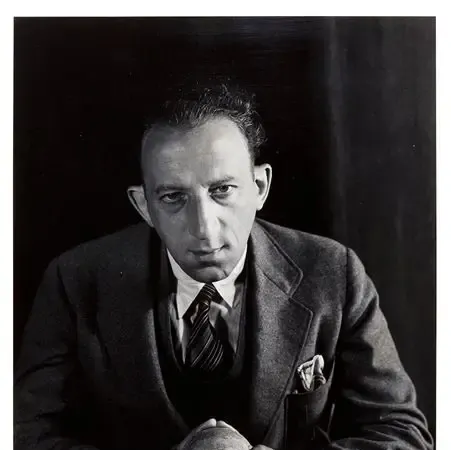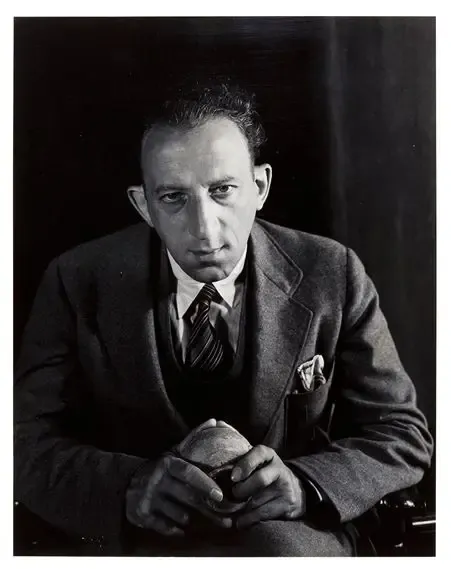Alfred Salmony

Alfred Salmony (10 Nov 1890, Cologne [Köln], Germany — 29 Apr 1958, Atlantic Ocean, heart attack aboard theIle-de-France ocean liner) was a museum curator and professor specializing in East Asian art, art of the Eurasian steppes, and Chinese jades, who also studied Southeast Asian art during his long career.
A student in art history and archaeology in Bonn and Vienna under Paul Clemen and Josef Strzygowski, Salmony interrupted his studies to serve in the German cavalry during World War II, completing his dissertation Europa – Ostasien. Religiöse Skulpturen (Europe – East Asia, Religious sculptures) in 1922. He was a curator at the Museum für Ostasiatische Kunst (Museum of East Asian Art) in Cologne from 1920 to 1925, when he became its Deputy Director until 1933. In that capacity, he was approached by French writer André Malraux when the latter was planning his infamous trip to Cambodia in search of Khmer sculptures to steal.
At that time, he traveled extensively, with teaching assignments in the US in 1926 – 1927 and 1932 – 1933, and numerous research trips to Siberia, the Caucasus, the Volga Valley, Ukraine, China, and Japan. Dismissed from the museum due to anti-Jewish Nazi laws, he briefly took refuge in France, working for the Musée Citroen and the Musée Cernuschi — he had contributed to the first issue of Musée Guimet’s Revue des arts asiatiques in May 1924. As soon as 1934, he left for the United States, first working as a lecturer of fine arts at Mills College in Oakland, California.
From 1938 to 1957, he was professor of Chinese, Siamese, and Indian Art History at the Institute of Fine Arts, New York University. He became editor-in-chief of Artibus Asiae in 1943, after being influential in its launch in 1925, along with Orientalist Carl Hentze. In 1950, he spent one year in Korea, teaching art history. He traveled to Ceylon (Sri Lanka), India, and Russia.
“Germany was the land of his birth, the United States the land of his adoption, France the land of his preference,” read his eulogy in College Art Journal (18−1, 1958, p. 77). And he was heading to Moscow via London– the last of his several visits to Russia — when he boarded for a fateful voyage the Ile-de-France in New York, an elegant cruise ship launched in 1926, the first major ocean liner built after World War I, and the first ever to be decorated almost entirely in modern Art Deco style, decommissioned in 1959.
Publications
- Ueber einige Verbindungen der Dibrom- und Dichromaleinsäure und ihre Ueberführung in Indigo (Eine neue Indigosynthese). Rostock, 1915.
- Europa – Ostasien. Religiöse Skulpturen. Dissertation University of Potsdam, 1922; numerous editions, including reprint by Forgotten Books, 2018.
- Orbis Pictus: Die Chinesische Landschafts Malerei. Verlag Ernst Wasmuth, Berlin, 1920.
- Die Chinesische Steinplastik. Berlin, 1922.
- Die Anfänge der Grossplastik in China. Klinkhardt & Biermann, Berlin, 1924.
- “L’art plastique du Thibet”. Revue des Arts Asiatiques no. 1, Musée Guimet, Paris, 1924.
- Sculpture in Siam. Ernest Benn, London, 1925; reprint by Hacker Art Books, New York, 1972. French edition: La Sculpture au Siam. G. Van Oest, Paris et Bruxelles, 1925.
- Die Chinesische Plastik: Ein Handbuch für Sammler. Berlin, 1925.
- Artibus Asiae (Periodical of Oriental Art. Zeitschrift für Östliche Kunst. Revue pour l’art asiatique). MCMXXV (1925) — no. I. (presentation by Carl Hentze and Alfred Salmony).
- “Ko-Ji Ho-Ten. Dictionnaire à l’usage des amateurs et collectionneurs d’objets d’art japonais et chinois by V. F. Weber”[review]. Artibus Asiae, vol I, 1925, pp. 78 – 79.
- “Mémoires Archéologiques publiés par l’école française d’extrême-orient. Tome I. Le temple d’Içvarapura (Bantāy Srēi) by Louis Finot, H. Parmentier, Victor Goloubew” [review in German]. Artibus Asiae, vol 3 – 1, 1928, pp 73 – 4.
- “Geschichte der indischen und indonesischen Kunst. by Ananda K. Coomaraswamy, H. Götz” [review in German]. Artibus Asiae, vol 3 – 1, 1928, pp 74 – 5.
- Asiatische Kunst Ausstellung Koln 1926. F. Bruckmann, Munich, 1929.
- Sino-Siberian Art in the Collection of C. T. Loo, 2 vols. C.T. Loo, Paris, 1933; reprint by White Lotus, Bangkok, 1998.
- “The Three Governors of Taoism. An Unusual Chinese Bronze Sculpture”. Gazette des Beaux-Arts, Paris, nd.
- “The Cicada in Ancient Chinese Art”. The Connoisseur magazine, London, 1933.
- Carved Jade of Ancient China. Gillick Press, Berkeley 1938; reprint Han-Shan Tang, London, 1982.
- 3000 Years of Chinese Jade Exhibition at Arden Gallery January 10 through February 11, 1939 [with Kendall K. Mussey]. Arden Gallery, New York, 1939.
- Chinese Painting Seventy-fifth Anniversary Exhibition May 22 To June 10, 1940 [Introduction]. Vassar College Art Gallery, Poughkeepsie, New York, 1940.
- The Santa Barbara Museum of Art presents An Exhibition of Masterpieces of Ancient China collected in China by Jan Kleijkamp during 1940 – 1941 [Introduction]. Jan Kleijkamp, New York and The Hague, 1940.
- Vassar College Art Gallery 1941: Far Eastern Jades, Charles M. Pratt Collection [Introduction]. Vassar College, 1941.
- Chinese Sculpture: Han 206 B.C.-A.D. 220 To Sung A.D. 960‑1279, Morrill Press, 1945; reprint by Literary Licensing, LLC, 2013.
- “An ivory carving from Malta (Siberia) and its significance”. Artibus Asiae, 1948: 285 – 288.
- “The third early Chinese owl with snake-legs”. Artibus Asiae, 1951: 277- 282.
- Archaic Chinese jades from the Edward and Louise B. Sonnenschein collection. Chicago 1952.
- “Artibus Asiae. Curat Editionem Alfred Salomny. Institute of Fine Arts. New York University. Vol. XVI, Separatum. Book Review: Taxila. An Illustrated Account of Archaeological Excavations Carried Out at Taxila under the Orders of the Government of India between the Years 1913 and 1934”. Artibus Asiae, Ascona, 1953.
- Antler and Tongue: An Essay on Ancient Chinese Symbolism and Its Implications. Artibus Asiae Publishers, 1954.
- “Bronzes of India and Greater India. An exhibition held during November 1955 at the Museum of Art, Rhode Island School of Design, Providence”, Artibus Asiae, 1956: 378 – 380.
- Chinese Jade: Through the Wei Dynasty. Ronald Press Company, New York, 1963.
- Related Photos

